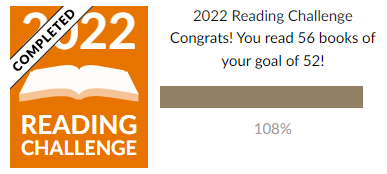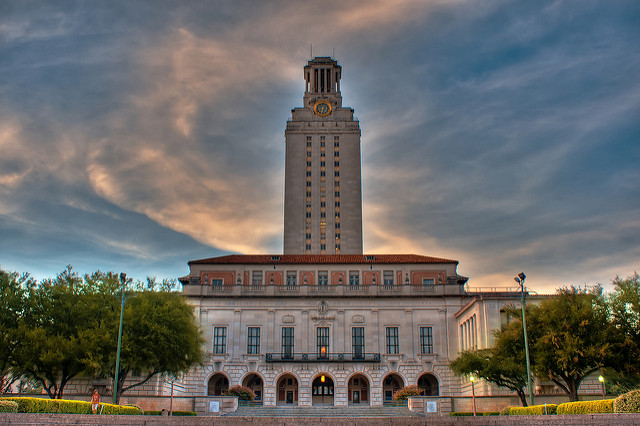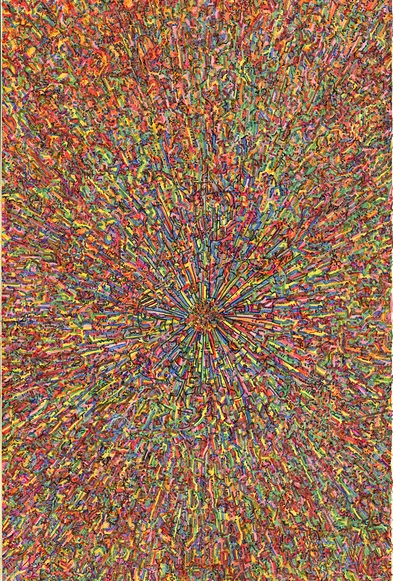Hi friend,
The end of TinyLetter means more Jdanspsa Wyksui. I’ve been sending out a monthly roundup of my reading, watching and listening for a few years now, and while I liked TinyLetter’s naked simplicity, the JWletter probably always belonged here. So: welcome to the fold, you strange monster.
You can subscribe to all new posts using the little email form on the sidebar at the right of this page – or the one right underneath this paragraph. Type in your email address, click Subscribe, then confirm by clicking the link in your email. We’ve all done this before.
For those who have come across from TinyLetter: thanks!
For those wondering why they should subscribe to film and literature criticism from yet another a cishet white dude whose knowledge of most fields, including film and literature, rarely rises above that of the dilettante: fair enough. You might prefer to check out a few more varied and/or experienced voices who deserve a larger audience: Deepanjana Pal, Jazial Crossley, Dan Slevin.
In case it helps you decide whether to stick around, my reviewing style is to look for what’s different about a book, or film, or song, and be honest about how I personally respond to it. I read widely across time, genre, and author demographics, and I skew positive because I tend to look for the best in people and their work. Sometimes I phone it in. Very occasionally, I put the boot in (see: Tuesdays with Morrie, How High We Go In The Dark).
Okay, on with the books, movies, and music of January 2024.
BOOKS
Dartmouth Park
by Rupert Thomson, 2023
Thomson’s premise here is one that would have me walking straight on by, were it any other author: white man in mid-fifties, existential crisis, leaves wife, searches for meaning overseas, delusions of grandeur. (A clue: this novel will be released in the UK this year under the title ‘How To Make A Bomb’.) It isn’t that Philip is wrong — the design choices that created our modern societies are almost uniformly flawed, and something needs to change — but he is not the truth-teller he thinks he is. Thomson is such a good writer that you almost empathise with him, even as his actions from the get go reveal him to be untrustworthy; meanwhile, the world he wanders through, often aimlessly, is vivid in its characters and details, from the weathered setts and high balconies of Cádiz to the stark landscape around Theo’s house in rural Crete, not to mention the starkness of Theo’s existence. Thomson adds another layer of difficulty by formatting the story in verse, like what Bernardine Evaristo calls ‘fusion fiction’, which actually makes it easier to read than if it were in full paragraphs and sentences. I found it compelling, shot through with one memorable scene after another, though the ending was a little frustrating and relegates the character Philip treats worst to stock status.
We Are Here: An Atlas of Aotearoa
by Chris McDowall and Tim Denee, 2019
Magnificent. A point in time in the history of this land, seen from most imaginable angles. Perfectly titled and carefully curated.
Tell You What: Great New Zealand Nonfiction, 2015
edited by Jolisa Gracewood and Susanna Andrew, 2014
We have some bloody good writers in this country. There were only a handful of pieces I didn’t really connect with. Favourites were by Simon Wilson, Gregory Kan, Lara Strongman, Megan Clayton, Leilani Tamu, Tina Makereti, David Herkt.
Werner Herzog – A Guide for the Perplexed
by Paul Cronin and Werner Herzog, 2014
This is longer and more comprehensive than Herzog’s superb biography but covers much of the same ground. I questioned the need to read it at all but quickly understood that if Herzog is speaking (or writing), I’ll be fascinated, even if I’ve heard the story before. There is a risk with Herzog that everything mundane about your life, all your foibles and failures and everything you’ve signed up to in modern society, is rendered petty and pointless and you might as well quit your job and pick up a camera and make something ecstatic happen through sheer will. I know, but mate, I have a mortgage.
Seven Brief Lessons on Physics
by Carlo Rovelli, 2014
The book I’ve been seeking for a while. Simple and elegant and very eye-opening for someone as ignorant of the basics as me. More accessible than A Brief History of Time. Probably still won’t seek out more detailed physics texts.
MOVIES
THE BOY AND THE HERON
directed by Hayao Miyazaki, 2023
I think THE BOY AND THE HERON owes many of its very positive reviews to critics’ love and affinity for Hayao Miyazaki — a true giant not just of the last four decades of cinema but of its entire history — and the worlds and wonders he’s gifted across a dozen or so meticulously crafted feature films. I wonder how a younger viewer unfamiliar with Miyazaki or his influence would respond to this one.
My guess is they’d at least be somewhat dazzled by the incredibly detailed animation; beyond that, they’d notice horror movie tropes throughout, particularly in the first half hour, and the video game logic that dominates the film once Mahito steps into the shadow world. He is a fundamentally blank protagonist, for a start, inexpressive even as he sprints through tunnels crumbling into the void. And that shadow world isn’t really a world at all; it’s a series of set pieces, generally populated by a different sidekick and a different set of villains, which Mahito must outwit so he can continue his quest. You can almost imagine a tutorial at the start of each episode explaining how to use the controller to achieve the movements and actions required to progress, or a series of hints to nudge you towards the correct solution. I don’t mean to invoke video games as an epithet, but there’s a limit to what you can do with character and theme when you’re bouncing from one grand edifice to another, especially without the rendering of open spaces between each, such as you’d find in the most recent Zelda games.
Miyazaki seems to have created this world to finally sign off. He is 83, and his films, which take years to produce, are like feats of endurance for everyone involved. There’s a grand-uncle character, also at the end of his life, who seeks a successor. But in the film’s denouement, Miyazaki seems to understand that no one else can keep up with his imagination and work ethic, no one’s going to carry it on in the same way after he’s gone. You could read Mahito as a cypher for Miyazaki’s son Goro, whose work as a director has consistently fallen well short of his father’s unfair benchmark. But I’m not sure THE BOY AND THE HERON is as simple as a rehashing of their (quite difficult) real-life relationship. It probably requires multiple viewings to see it from the necessary angles. Notice how I haven’t mentioned the heron, or the two mothers, or the mostly absent father, or Miyazaki’s seeming hatred of all birds.
I was a bit tired so I spent much of the film on the verge of nodding off. But like the critics, I’m a longtime Miyazaki fan, too, so at this film’s destructive climax, I really felt that this was the ultimate end (for real this time) of this great director’s artistry and imagination — and I couldn’t stop myself from weeping. My wife turned to me as the credits rolled and announced, “Well, that was incoherent!” Then: “Oh God! Are you all right?” I will be, love, because at the very least, we’ll always have MY NEIGHBOUR TOTORO.
MUSIC
An Unnatural History
by LYR
Bandcamp
Sometimes Spotify’s algorithms really get me. God knows why they dropped the careful intonements of Poet Laureate of the United Kingdom Simon Armitage, backed by musicians Richard Walters and Patrick J Pearson, into my ‘Popular new releases’. LYR (Land Yacht Regatta) aren’t popular, and they’re certainly divisive in this household, with my wife and children grimacing every time I put them on. Those of a weirder, weightier bent will be drawn initially to Armitage’s spoken word — which repeatedly references the fauna of Barnsley and its former Natural History Museum, which “disappeared under somewhat mysterious circumstances” — then to Walters and Pearson’s alternately mournful and rocking tunes that more than back him up. The effect is to amplify the power of written word and of song when brought together, but also to emphasise the permeability of time, connecting what once was with what now is — and even with what can be imagined. I’ve never been to Barnsley but this record makes me feel like I’m standing on Eldon Street, watching the Tesco bags and the fox cubs go by.
Wall of Eyes
by The Smile
Bandcamp
Jonny Greenwood’s unsettling strings and discordant guitars and piano; Thom Yorke wandering, again the unglimpsed seer (see also), one of the “grains of sand slipping through our hands”. Doors opening, doors closing, selves multiplying and vanishing. The aim here seems similar to their work with Radiohead: to twist the human world so its excesses, its muddles and its strangest expressions of love are in floodlights; to be cynical and earnest at the same time. I, too, am both cynical and earnest about this record, and about most of what Radiohead and its members have put out over the last ten years. For example, I see Yorke is back on his car crash stuff again in ‘Bending Hectic’, which starts quiet and builds to a crescendo over eight surprisingly short minutes. “We’re just riding on those things – we’re not really in control of them“: we’ve heard it before, mate, in ‘Airbag’, ‘Killer Cars’, etc. But those are great songs, too, and the perspective’s different here, and Tom Jenkins’ jazz-trained drums fit perfectly in a way Phil Selway’s more precise style might not. So I keep listening.








 At the back end of 2016, two months before the wedding, I told Tara a mole on my left ankle had become itchy. Increasingly catastrophic discussion of maladies and death followed, at the end of which she set out an ultimatum: there would be no marriage unless I got a mole map before the wedding date. I’d meant to get one for years, but here at last was an effective motivator.
At the back end of 2016, two months before the wedding, I told Tara a mole on my left ankle had become itchy. Increasingly catastrophic discussion of maladies and death followed, at the end of which she set out an ultimatum: there would be no marriage unless I got a mole map before the wedding date. I’d meant to get one for years, but here at last was an effective motivator. A lot happened in politics this year. We got a new government in New Zealand. Donald Trump became president of the United States. Both of these events were dramatic and surprising reversals of the status quo – perhaps not a complete upending of it, but the landscape is undoubtedly changed. And it was all many of us could talk about.
A lot happened in politics this year. We got a new government in New Zealand. Donald Trump became president of the United States. Both of these events were dramatic and surprising reversals of the status quo – perhaps not a complete upending of it, but the landscape is undoubtedly changed. And it was all many of us could talk about. With every year that passes, I get further behind the tech curve, safe in my Luddite haven. There are four computers in our house but the newest is from 2012. There are two smartphones, both cheap and a couple of years out of date. There is one television and its projection is via cathode ray tube. There are two cars in the driveway: one from 2000, the other from 1991. Still, I sit on Facebook and Twitter a lot more than I’d like to.
With every year that passes, I get further behind the tech curve, safe in my Luddite haven. There are four computers in our house but the newest is from 2012. There are two smartphones, both cheap and a couple of years out of date. There is one television and its projection is via cathode ray tube. There are two cars in the driveway: one from 2000, the other from 1991. Still, I sit on Facebook and Twitter a lot more than I’d like to. This year, I undertook a new project: prioritise reading books from years ending in 7. I put together a master reading list of books from 1917, 1927, 1937 etc., aiming for a variety of voices (i.e. female, people of colour) in there, and hoped the jumping around in time wouldn’t be too taxing on my rather comfortable reading mind.
This year, I undertook a new project: prioritise reading books from years ending in 7. I put together a master reading list of books from 1917, 1927, 1937 etc., aiming for a variety of voices (i.e. female, people of colour) in there, and hoped the jumping around in time wouldn’t be too taxing on my rather comfortable reading mind. On the fourth day of our honeymoon, Tara and I hired a two-person sailboat and tacked out to the middle of Muri Lagoon. Neither of us had ever sailed before. “It’s not that hard,” said the incredibly laconic, shirtless man who had drawn some basic diagrams in the sand and sent us on our way.
On the fourth day of our honeymoon, Tara and I hired a two-person sailboat and tacked out to the middle of Muri Lagoon. Neither of us had ever sailed before. “It’s not that hard,” said the incredibly laconic, shirtless man who had drawn some basic diagrams in the sand and sent us on our way.








